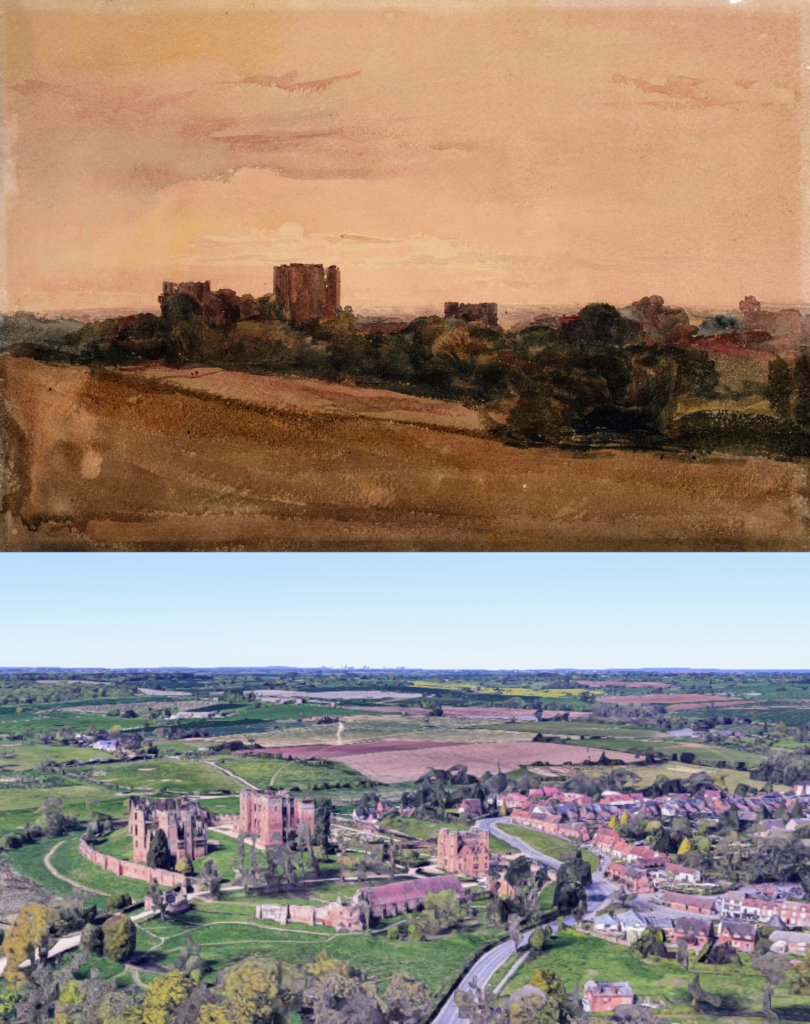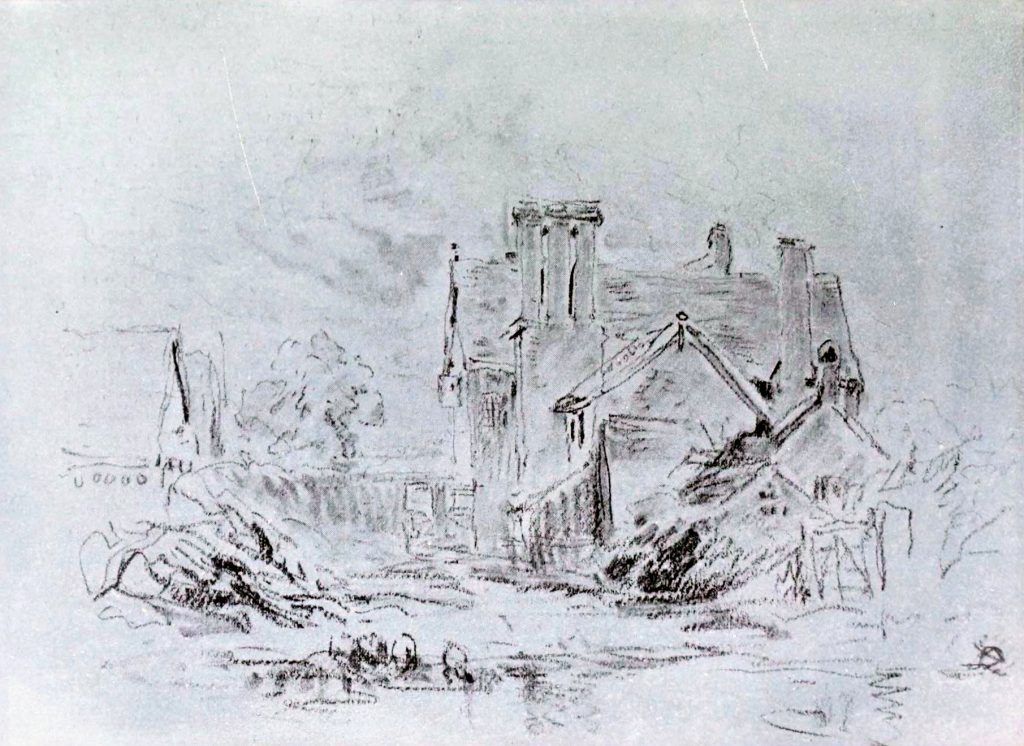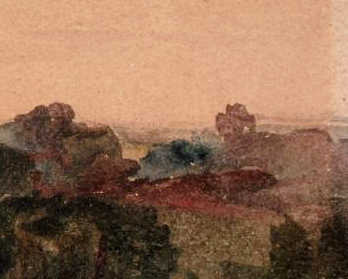
The painting in this Then & Now comparison is a watercolour on paper by Peter de Wint (1784 – 1849), entitled simply ‘Kenilworth Castle’. The painting was bequeathed to the Tate Collection by John Henderson in 1879. The Tate biography for de Wint says that he was born at Hanley, Stoke-on-Trent, the son of a physician of Dutch ancestry who had come to England from New York. A number of his pictures are in the National Gallery, the Victoria and Albert Museum and The Collection, Lincoln. He specialised in English landscapes like the one above.
The painting was flagged to me by Joanna Illingworth, accompanied by a tale of a mystery to be solved. Joanna asked “Over ten years ago someone who had bought a sketch by David Cox (1783-1859) of an unnamed building in Kenilworth asked readers of KWN for help identifying it. After mulling over various suggestions the owner decided that it was of Rudfyn Manor. If you look closely at the attached copy of Kenilworth Castle by Peter de Wint (1784 – 1849) you will see a building on the horizon near the top right hand edge of the painting. It looks as though it might be the same one as in the David Cox sketch”.

There’s a lot to unpick in this little mystery. Firstly, the David Cox sketch in question was entitled simply ‘Near Kenilworth’. His biography on The Victorian Web website states “Throughout a long and productive career, Cox (1783–1859) made a specialty of capturing the effects of weather and light in the English and Welsh countryside. Born in Birmingham, Cox began as a watercolor painter in London in 1804, the founding year of the Society of Painters in Water-Colours, of which he would later become a member and regular exhibitor” but there are no further details of where his sketch was composed. It seems to be one of a series conducted in the area though, including the similarly named ‘Near Kenilworth Castle’.
Whether the building Cox depicted was indeed Rudfyn Manor, as the KWN concluded, seems to me to be doubtful. Rudfyn is more cruciform in plan, with a central chimney cluster, whereas the building in Cox’s sketch has one main gabled building with a cluster of three large chimney pots to one side. Nor does it seem to match nearby Redfern Manor, which is closer in style but also lacking the telltale triple chimney configuration.
Comparing it to various pictures in Robin Leach’s books, it’s not recognisably any of the old mansions around Kenilworth either, many of which are now lost (Rouncil Towers, The Moorlands, The Firs, Chesford Grange, The Towers, Thickthorn, The Elmdenes etc.). Nor is it a obviously a depiction of some of the larger houses slightly further afield, which could conceivably considered as ‘near Kenilworth’ (e.g. Nailcote Hall, Stoneleigh Abbey, Blackdown Mill, Bericote Mill, Saxon Mill, Lavender Hall Farm etc.) or further afield towards Coventry, Meriden or Hampton in Arden (Styvechale Manor, Diddington Hall, the old Stonebridge Hotel, or Stonebridge House). There are buildings in the area which feature the distinctive three-stack chimneys in the sketch, such as a very grand house at the end of Vicarage Lane in Stoneleigh, for example, or on larger buildings like Honiley Hall. Perhaps one of our readers can conclusively identify the house shown once and for all?
Meanwhile, we can turn to Joanna’s question as to whether Peter de Wint’s painting could conceivably depict Rudfyn Manor. I have triangulated the vantage point of the ‘now’ image, based on the location of the Castle’s various towers, shown left to right as Leicester’s Buildings, the Keep and the Gatehouse. This means that the artist’s viewpoint must have been somewhere up on the hill where Forrest Road is now. The view would be obscured today by numerous trees and houses in the foreground, hence the ‘now’ image has been sourced from the 3D photogrammetry view on Google Maps. In the distance you can see a patch of yellow rapeseed and Rudfyn Manor is situated at the left-hand corner of that yellow field. So, the blob is slightly further east than it should be, and surely too distant, to be Rudfyn Manor? If we zoom into de Wint’s painting a little, the blob in question is not clearly identifiable. It could be a building or it could simply be the canopy of a tall tree, de Wint having used similar tints for both.
So, more questions than answers but it is interesting to delve into these mysteries and see if we can unlock the mystery.
Thanks to Joanna Illingworth for providing the ‘then’ images used in this article.

